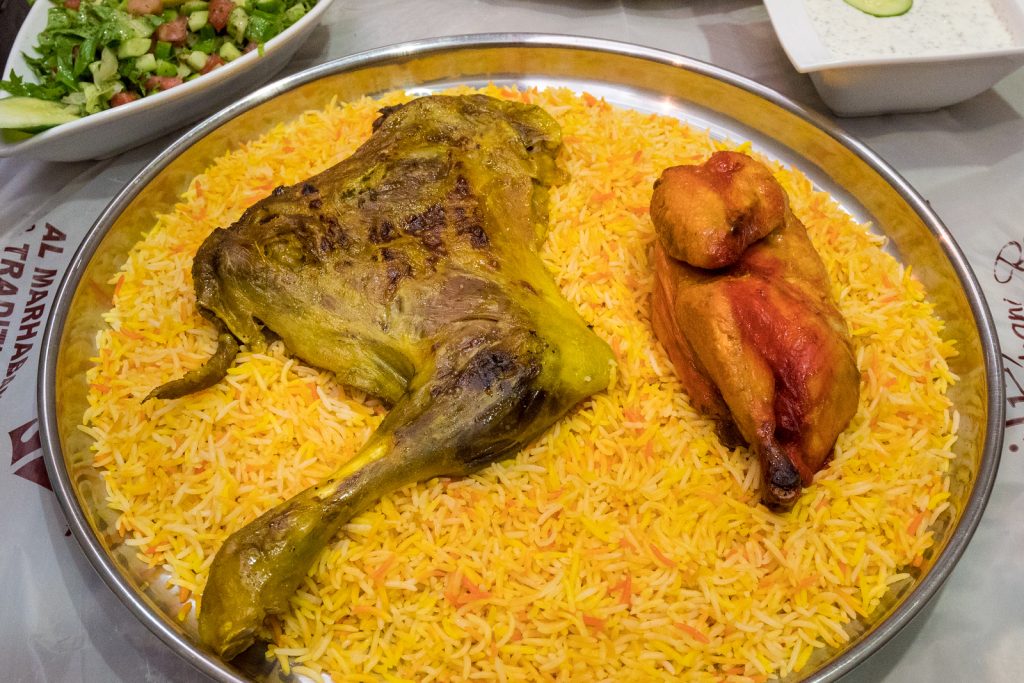What makes a food tour in Dubai so different isn’t just the dishes—it’s the setting. Picture yourself walking through narrow alleys in Deira where grilled meat smells dance with spice. Then imagine yourself a few hours later seated in a glass restaurant in Downtown, overlooking dancing fountains while sipping saffron tea. The contrast isn’t just visual—it’s cultural, historical, and sensory. A well-done food tour lets you trace Dubai’s rapid rise through its evolving menus. But that requires planning, curiosity, and understanding where tradition ends and reinvention begins. And yes, there’s an etiquette to it, too. Let’s walk you through every bite, every stop, and every nuance this city’s cuisine has to offer.
Old Dubai tastes like time, not trends—and you’ll feel it in every bite
If you start your tour in Deira or Al Fahidi, don’t expect shiny plates or fusion menus. These districts give you food that’s slow-cooked and time-tested. Emirati dishes like harees and machboos are served in simple spots with plastic chairs and big hearts. Most meals here are eaten with the right hand and meant to be shared. Dates are given not as dessert, but as respect. You’ll notice locals mixing rice with meat and yogurt using gestures, not forks. This part of Dubai is quiet in rhythm but loud in flavor. If you’re lucky, you’ll hear stories about fishermen and pearl divers between courses. And if you’re really curious, you’ll realize the real seasoning isn’t cumin—it’s memory.
No food tour is complete without getting lost in Dubai’s back-alley aromas
Away from the skyscrapers, Satwa and Al Karama offer something rawer. Walk behind neon signs, and you’ll find pop-up eateries serving biryani on banana leaves, Filipino grilled skewers, or Sudanese falafel so fresh it melts on your fingers. These places have no menus, no reservations, no ceremony. Just lines of people who know exactly what they came for. Try stopping at three such joints back-to-back—it’s not about fullness, it’s about discovery. Pay attention to who’s cooking, who’s waiting, and who’s laughing around you. That’s where Dubai really lives—under the radar, between bites, behind steam-covered windows.
Modern Dubai dines in skyscrapers—but even up there, stories are served
Now shift to the other extreme—Downtown, DIFC, Marina. Restaurants here look like art galleries, and every plate feels like an exhibition. Chefs are as global as the city itself. Expect hummus with truffle foam or camel sliders paired with pomegranate glaze. It’s theatrical, sure, but there’s also pride. Many of these chefs use local ingredients in new ways—UAE honey, Emirati sea salt, desert saffron. Sit by the window, taste something you can’t pronounce, and watch a skyline that didn’t exist twenty years ago. This part of your tour isn’t just about food—it’s about ambition plated with elegance.
Markets feed the city’s soul before they fill its stomach
No food tour in Dubai is real if you skip the markets. Step into the spice souk and the air changes. It stings, seduces, sometimes even makes you sneeze. Turmeric sits beside dried rose petals. Cinnamon competes with cardamom for your attention. Ask the shopkeepers questions—they might hand you a clove or crack a joke in four languages. From there, visit fish markets in Waterfront or even local weekend markets in residential neighborhoods. You’ll see how food here is not just eaten—it’s hunted, bargained, chosen, and cleaned with ritual care. That’s half the story right there.
A good tour feeds your brain as much as your belly
Join a guided tour, and you’ll hear things you wouldn’t notice alone. Why is camel milk rarely served fresh? What’s the difference between Levantine and Khaleeji grilling? How did Dubai’s working-class migrants shape what we now call “local food”? A proper tour guide in this city doesn’t just point to stalls—they narrate its history through dough, spices, and fire. Some even take you home for a traditional meal. And that’s a line you can’t cross without help: stepping from a public menu into a private kitchen. These meals linger longest—not because of the food, but because of the conversation.

Street food here isn’t fast—it’s familiar, comforting, and oddly poetic
Try one evening walking along Jumeirah Road or Al Rigga after sunset. You’ll smell shawarma before you see it. Nearby, small carts fry samosas with soft murmurs in the background. A Bangladeshi cook waves at you while slicing egg rolls at light speed. Everything’s served in paper wraps, often eaten on parked car hoods. It’s not about how gourmet the food is—it’s about how right it feels. There’s something deeply human about watching someone eat after a long day’s work, smiling over spicy noodles or licking fingers after grilled corn. Join them. That’s the real five-star.
Cultural etiquette matters more than any reservation you make
Before you dive in, understand the unspoken rules. Always eat with your right hand unless using utensils. Never touch someone’s plate without permission. Sharing is expected, but so is respect for dietary rules. During Ramadan, avoid eating or drinking in public until sunset—even if you’re not fasting. Dress modestly in traditional areas, especially if you’re invited to a local home. And when someone offers you gahwa, don’t gulp it—sip and thank them. These small acts don’t just make you polite. They earn you smiles, stories, and sometimes even extra servings.
Desert cuisine holds quiet wisdom, if you know where to listen
Inland, toward Al Awir or even the edges of Sharjah, you’ll find Bedouin-inspired dishes often cooked underground. These meals rely on time more than technique—slow-roasted lamb, fermented yogurt, spiced rice buried under coals. Many places serve this on woven mats, under tents, or open skies. It’s rustic, yes, but don’t confuse that with simple. Every flavor here earned its place over centuries. The wind, the sand, the fire—all played their part. Eating this food isn’t about taste only. It’s about hearing echoes of survival, gratitude, and a deep-rooted connection to land.
Fusion food in Dubai isn’t a trend—it’s an identity
Some call it fusion, but here it’s just dinner. An Emirati mother might serve biryani with pickled mango, while her daughter prefers Thai curry over basmati. That blend isn’t artificial—it’s organic, born of a city where nationalities cross more than streets. At brunches, you’ll find sushi next to ouzi, or pizza topped with za’atar. Instead of trying to label everything, just enjoy the ride. Dubai’s plates are like its skyline—each built on something older, layered with something new. And when they work, they don’t just satisfy your hunger. They surprise you.
Cooking classes let you take a piece of Dubai home, bite by bite
Several centers and locals now offer cooking workshops that go beyond recipes. They teach you the gestures, the ingredients’ stories, the meaning of rituals. From kneading regag to wrapping vine leaves, the hands-on experience brings new appreciation. You’ll leave with skills, yes, but also a new relationship with flavor. For visitors staying longer, these classes offer grounding in a city that often feels like it changes weekly. Food becomes your compass. And the kitchen, a place of translation—between culture, taste, and memory.
The last flavor isn’t on your plate—it’s in how the tour changes you
A good food tour doesn’t just fill you up. It rearranges your sense of the city. You start to notice how a simple cup of tea at a Karama café feels warmer after knowing who brewed it. You remember how the air near Al Fahidi smelled richer once you understood what bakhoor was. Food builds memory faster than any photo. And Dubai gives you the contrast, the generosity, the surprise to make those memories stay. Take your time. Ask questions. And leave room for dessert—not just on your plate, but in your story.


 then "Add to Home Screen"
then "Add to Home Screen"